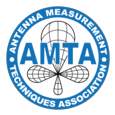Jaime Laviada, Ana Arboleya-Arboleya, Fernando Las-Heras, October 2017
Millimeter-wave scanners are a powerful tool in multiple fields such as security and non-destructive evaluation. Recent advances in design and manufacturing at this frequency band, also boosted by automotive and communication industries, are resulting in the first generation of portable scanners based on different imaging paradigms.
In the recent work of the authors, the capabilities of this kind of portable scanners have been considered. In particular the evaluation of different methods to combine multiple (potentially overlapped) acquisitions from arbitrary points has been considered [1]. The proposed imaging method for each local acquisition was based on Synthetic Aperture Radar (SAR) techniques. Nevertheless, this kind of imaging method usually requires a dense sampling and, consequently, it can result in a large number of transceivers increasing the cost and weight of the device. For this reason, the use of multistatic arquitectures, also known as multiple-input multiple-output (MIMO), similar to the ones proposed in [2] is considered in this communication. This approach enables to reduce the total number of elements by almost an order of magnitude by placing transmitters and receivers at different positions along the scanner aperture in contrast to conventional SAR that considers a dense aperture of equally spaced independent transceivers. As demonstrated in [2], if the position of transmitters and receivers is properly designed, the obtained results are equivalent to the ones provided by a conventional dense sampling.
[1] Jaime Laviada, Yuri Álvarez, Ana Arboleya, Fernando Las-Heras, Borja González Valdés, “Multiview Techniques for mm-Wave Imaging” Antennas and Propagation Simposium AP-S 2017, San Diego, USA, 2017.
[2] S. Ahmed, A. Schiessl, and L. Schmidt, “A novel fully electronic active real-time imager based on a planar multistatic sparse array,” IEEE Transactions on Microwave Theory and Techniques, vol. 59, no. 12, pp. 3567–3576, 2011.
